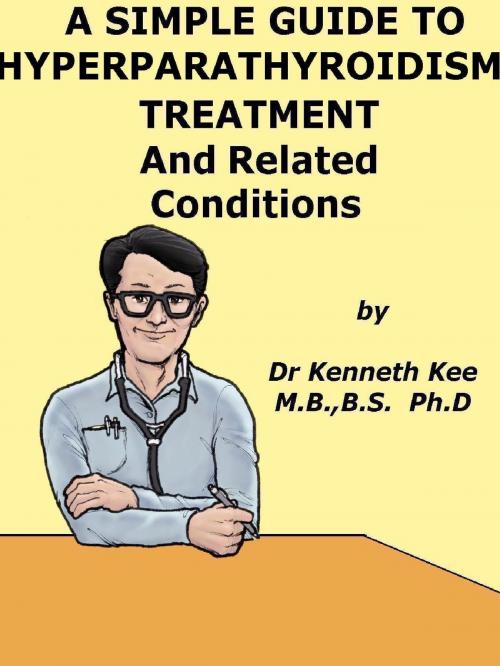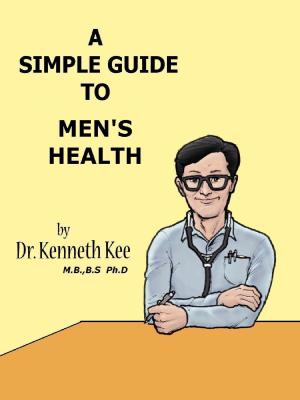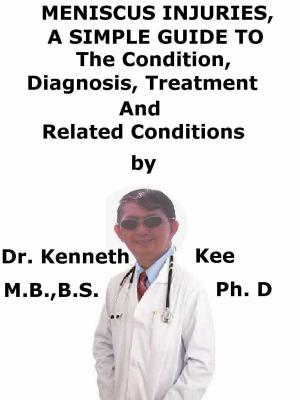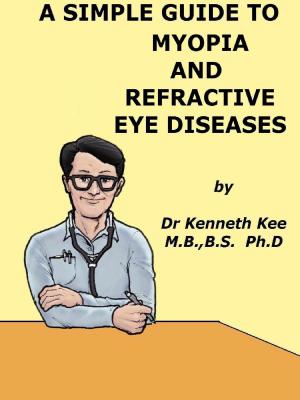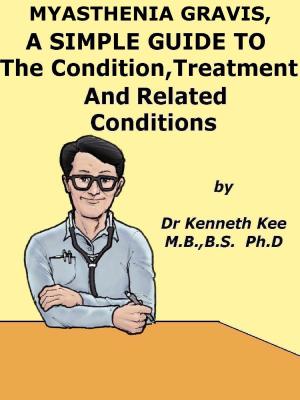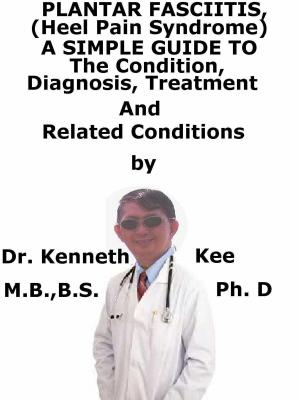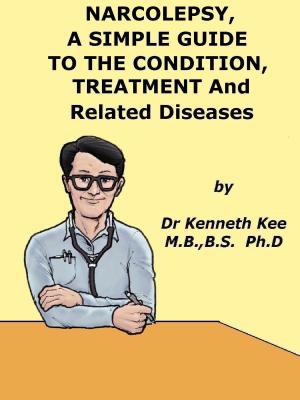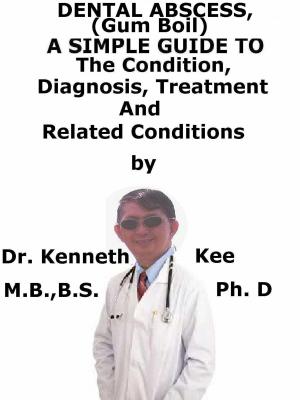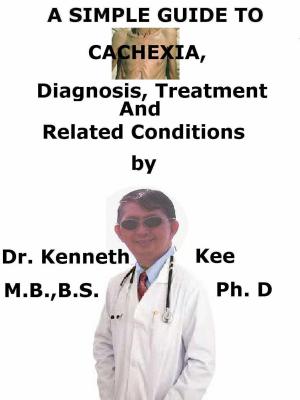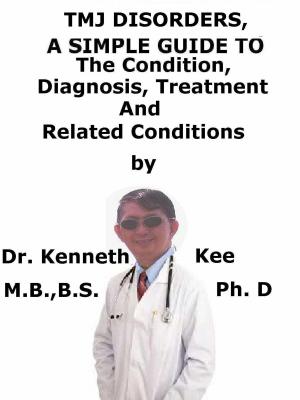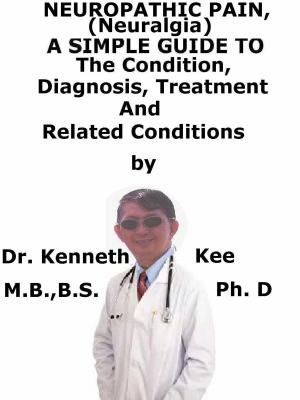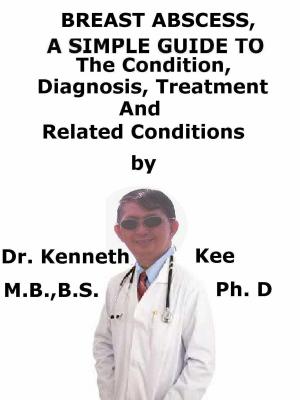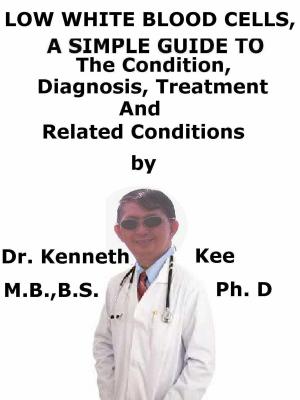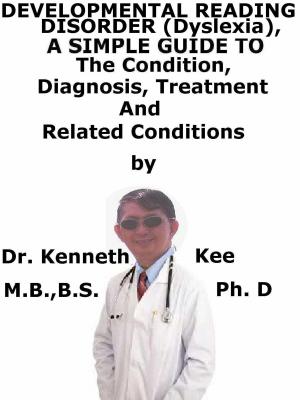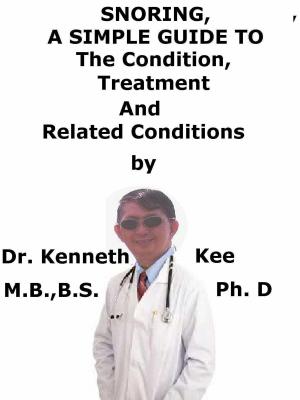A Simple Guide to Hyperparathyroidism, Treatment and Related Diseases
Nonfiction, Health & Well Being, Medical, Specialties, Internal Medicine, Endocrinology & Metabolism, General| Author: | Kenneth Kee | ISBN: | 9781311195937 |
| Publisher: | Kenneth Kee | Publication: | May 25, 2014 |
| Imprint: | Smashwords Edition | Language: | English |
| Author: | Kenneth Kee |
| ISBN: | 9781311195937 |
| Publisher: | Kenneth Kee |
| Publication: | May 25, 2014 |
| Imprint: | Smashwords Edition |
| Language: | English |
Introduction
Ode To Hyperparathyroidism
Four little grains of parathyroid glands
At the back of the butterfly shaped Thyroid Gland
You all produce a bit of parathyroid hormone
To regulate the calcium in the blood and bone
But when your glands produce too much
And one of you suddenly become enlarged
You really make me suffer all the weakness and pain
From the loss of calcium accumulated in the bones in vain
Calcium and phosphorus combine to make calcium phosphate.
That material gives hardness and strength to bones and dental plate
Calcium is also needed to help blood to clot after an injury.
It is also required for muscles and nerves to work properly
Phosphorus works with calcium to do these jobs.
Excess parathyroid hormone will cause the phosphorus and energy to drop
No medicine has been known to cure this wayward gland.
I am afraid that only your removal will be the only end
-An original poem by Kenneth Kee
Interesting Tips about the Hyperparathyroidism
A Healthy Lifestyle
1. Take a well Balanced Diet
2. Treatment of hyperparathyroidism includes:
If you have mildly increased calcium levels from primary hyperparathyroidism and you do not have symptoms, you may choose to have regular checkups or get treated.
If you decide to have treatment, it may include:
a. Drinking more fluids to prevent kidney stones from forming
b. Exercising
c. Avoiding thiazide-type diuretics
d. Having surgery to remove the overactive glands (recommended for people under age 50)
e. If you have symptoms or your calcium level is very high, you may need surgery to remove the parathyroid gland that is overproducing the hormone.
f. If all four parathyroid glands are overactive, usually three and a half of the glands are removed so that you have some remaining parathyroid tissue.
3. Keep bones and body strong
Bone marrow produces our blood
Eat foods rich in calcium like yogurt, cheese, milk, and dark green vegetables.
Eat foods rich in Vitamin D, like eggs, fatty fish, cereal, and fortified milk.
Eat food rich in Vitamins B and C such as green vegetables and fruits
Zinc and other minerals are important to the body
4. Get enough rest and Sleep
Avoid stress and tension
5. Exercise and stay active.
It is best to do weight-bearing exercise such as walking, jogging, stair climbing, dancing, or lifting weights for 2½ hours a week.
One way to do this is to be active 30 minutes a day at least 5 days a week.
Begin slowly especially if a person has not been active.
6. Do not drink more than 2 alcohol drinks a day for a man or 1 alcohol drink a day for a woman.
Alcohol use also increases the chance of falling and breaking a bone.
Alcohol can affect the neurons and brain cells.
7. Stop or do not begin smoking.
It also interferes with blood supply and healing.
Chapter 1
Hyperparathyroidism
What is Hyperparathyroidism?
Hyperparathyroid disease is a condition when the parathyroid gland produces too much parathyroid hormones resulting in hypercalcemia.
Hyperparathyroidism is more common than Hypoparathyroidism.
What are the causes of Hyperparathyroidism?
Hyperparathyroid disease is caused by:
Primary Hyperparathyroidism:
1. Parathyroid hyperplasia
2. Parathyroid tumors such as adenoma or carcinoma
3. Excess parathyroid hormones leads to hypercalcemia from bone resorption, decreased renal excretion and increased intestinal absorption of calcium.
4. Bone changes, nephrocalcinosis and corneal calcifications
Secondary Hyperparathyroidism.
Found in conditions causing hypocalcemia such as:
1. Renal failure
2. Vitamin D deficiency
3. Malabsorption syndrome
Introduction
Chapter 1 Hyperparathyroidism
Chapter 2 More Facts about Hyperparathyroidism
Chapter 3 Treatment of Hyperparathyroidism
Chapter 4 Hypercalcemia
Chapter 5 Calcium and Phosphorus Metabolism A Summary
Chapter 6 Parathyroid Hyperplasia
Epilogue
Introduction
Ode To Hyperparathyroidism
Four little grains of parathyroid glands
At the back of the butterfly shaped Thyroid Gland
You all produce a bit of parathyroid hormone
To regulate the calcium in the blood and bone
But when your glands produce too much
And one of you suddenly become enlarged
You really make me suffer all the weakness and pain
From the loss of calcium accumulated in the bones in vain
Calcium and phosphorus combine to make calcium phosphate.
That material gives hardness and strength to bones and dental plate
Calcium is also needed to help blood to clot after an injury.
It is also required for muscles and nerves to work properly
Phosphorus works with calcium to do these jobs.
Excess parathyroid hormone will cause the phosphorus and energy to drop
No medicine has been known to cure this wayward gland.
I am afraid that only your removal will be the only end
-An original poem by Kenneth Kee
Interesting Tips about the Hyperparathyroidism
A Healthy Lifestyle
1. Take a well Balanced Diet
2. Treatment of hyperparathyroidism includes:
If you have mildly increased calcium levels from primary hyperparathyroidism and you do not have symptoms, you may choose to have regular checkups or get treated.
If you decide to have treatment, it may include:
a. Drinking more fluids to prevent kidney stones from forming
b. Exercising
c. Avoiding thiazide-type diuretics
d. Having surgery to remove the overactive glands (recommended for people under age 50)
e. If you have symptoms or your calcium level is very high, you may need surgery to remove the parathyroid gland that is overproducing the hormone.
f. If all four parathyroid glands are overactive, usually three and a half of the glands are removed so that you have some remaining parathyroid tissue.
3. Keep bones and body strong
Bone marrow produces our blood
Eat foods rich in calcium like yogurt, cheese, milk, and dark green vegetables.
Eat foods rich in Vitamin D, like eggs, fatty fish, cereal, and fortified milk.
Eat food rich in Vitamins B and C such as green vegetables and fruits
Zinc and other minerals are important to the body
4. Get enough rest and Sleep
Avoid stress and tension
5. Exercise and stay active.
It is best to do weight-bearing exercise such as walking, jogging, stair climbing, dancing, or lifting weights for 2½ hours a week.
One way to do this is to be active 30 minutes a day at least 5 days a week.
Begin slowly especially if a person has not been active.
6. Do not drink more than 2 alcohol drinks a day for a man or 1 alcohol drink a day for a woman.
Alcohol use also increases the chance of falling and breaking a bone.
Alcohol can affect the neurons and brain cells.
7. Stop or do not begin smoking.
It also interferes with blood supply and healing.
Chapter 1
Hyperparathyroidism
What is Hyperparathyroidism?
Hyperparathyroid disease is a condition when the parathyroid gland produces too much parathyroid hormones resulting in hypercalcemia.
Hyperparathyroidism is more common than Hypoparathyroidism.
What are the causes of Hyperparathyroidism?
Hyperparathyroid disease is caused by:
Primary Hyperparathyroidism:
1. Parathyroid hyperplasia
2. Parathyroid tumors such as adenoma or carcinoma
3. Excess parathyroid hormones leads to hypercalcemia from bone resorption, decreased renal excretion and increased intestinal absorption of calcium.
4. Bone changes, nephrocalcinosis and corneal calcifications
Secondary Hyperparathyroidism.
Found in conditions causing hypocalcemia such as:
1. Renal failure
2. Vitamin D deficiency
3. Malabsorption syndrome
Introduction
Chapter 1 Hyperparathyroidism
Chapter 2 More Facts about Hyperparathyroidism
Chapter 3 Treatment of Hyperparathyroidism
Chapter 4 Hypercalcemia
Chapter 5 Calcium and Phosphorus Metabolism A Summary
Chapter 6 Parathyroid Hyperplasia
Epilogue
